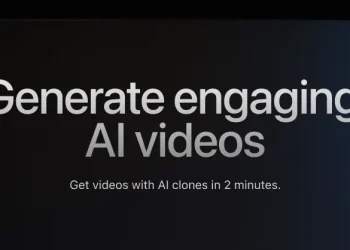A striking 79% of principal agents in the insurance industry are embracing AI or planning to soon. This marks a big change towards digital innovation. Artificial intelligence is changing the insurance world. It makes things work better, improves how we talk to customers, and speeds up claims and underwriting.
The market for AI in insurance is expected to hit USD 35.77 billion by 2030. Companies are now using Insurtech AI to fight the huge losses from insurance fraud, which totals $308.6 billion a year. AI helps insurers deal with lots of data, cuts down on mistakes, and serves customers faster. This makes the experience better for everyone.
Digital insurance with AI is setting new standards for managing risks, handling claims, and serving customers. It’s changing how companies work and making them perform better.
Key Takeaways
- 79% of principal agents plan to adopt AI platforms in the near future.
- AI in insurance market expected to reach USD 35.77 billion by 2030.
- Annual costs of insurance fraud exceed $308.6 billion.
- AI can improve claims accuracy by 99.99%.
- Operational efficiency in the insurance sector has surged by 60% due to AI.
Understanding the Role of AI in the Insurance Sector
Artificial intelligence is changing the insurance world. It helps insurers move from old ways to new, data-based strategies. AI makes things run smoother by handling tasks like underwriting and customer service. This leads to a proactive approach, helping companies spot and fix problems early.
Overview of AI Transformation
Big names like IBM, Apple, Google, Facebook, and Amazon are using Insurtech AI to change insurance. A 2021 PwC survey showed that making customers happier is the top way to use AI in insurance. But, insurers are careful about AI’s risks, like cybersecurity issues.
Historical Context and Adaptation
The insurance world has a long history of manual work and lots of paperwork. Moving to AI has taken time. Companies like Vienna Insurance Group (VIG) show how big players can use AI to fix old problems.
VIG focuses on technology, being green, and diversity. It uses tools like SAP S/4HANA to improve its work. This change shows how AI is key to making insurance better and more innovative.
The Impact of AI in Insurance
The insurance industry is changing fast, thanks to AI. This change moves from just reacting to problems to being proactive. It’s changing how insurers handle risks and deal with customers. AI helps companies predict claims and losses, making it easier to prevent them.
Shifting from Reactive to Proactive Approaches
Before, insurance was all about reacting to problems after they happened. AI has changed that. It uses data analytics to understand customers better. This lets insurers offer insurance that fits each customer’s needs.
Using AI has made managing data easier, with 42 percent of experts seeing big benefits. This shift to proactive insurance keeps customers happy and builds strong relationships.
Operational Efficiency Improvements
Adding AI to insurance tech has made things run smoother. Operations have gotten 60 percent better, thanks to less manual work and faster data handling. AI helps process claims faster, making customers happier.
Automation is also cutting costs for insurers. With 58 percent of CEOs confident in AI’s benefits, the future looks bright. These changes build trust with customers, setting the stage for growth.
AI in Insurance: How It’s Streamlining Customer Service
The insurance industry is changing fast, thanks to new tech in AI customer service. AI-powered chatbots and virtual assistants are key. They make customer interactions better by giving quick answers 24/7. This makes customer service fast and friendly.
Chatbots and Virtual Assistants
Chatbots are now vital in insurance, handling lots of questions easily. They can do simple tasks like give coverage details or start claims. This lets human agents focus on harder issues, making service better. Customers get a smooth experience, with AI-driven communication making them happier and more engaged.
Customer Interaction Automation
AI makes customer service consistent and accurate. It uses data to send messages that fit each customer’s needs. This means shorter wait times and more control for customers over their insurance. It shows a new way to offer digital insurance service.
| Feature | AI Chatbots | Traditional Customer Service |
|---|---|---|
| Availability | 24/7 | Limited hours |
| Response Speed | Instant | Variable |
| Complexity Management | Handles basic queries | Humans handle all queries |
| Personalization | Data-driven insights | Limited by human capacity |
| Cost Efficiency | Reduced operational costs | Higher staffing costs |
These technologies make insurance services better and keep customers coming back. Using AI solutions is key for insurers to succeed in a digital world. For more on how tech changes different fields, check out this resource.
Enhancing Claims Processing with AI
AI is changing claims management, making it more efficient and accurate. It helps insurance companies process claims much faster. Automation tools make entering and analyzing data quicker, cutting down the time it takes to process claims from weeks to minutes.
Reducing Processing Times
Technology is changing how claims are handled. Now, companies use advanced algorithms to quickly look at important information. This has cut down the time it takes to process claims by a lot.
A recent survey found that 47% of insurers think AI makes handling claims faster. This makes the experience better for users and makes things run smoother. Adjusters can now handle more claims at once, which helps improve service and cuts costs.
Increasing Accuracy in Claims Management
Adding AI to claims management makes things run smoother and more accurately. Algorithms look at past claims data to spot patterns and make better recommendations. This cuts down on mistakes that happen when people enter or interpret data.
About a third of people who filed a claim were unhappy with the experience. Making claims more accurate can help avoid disputes and keep things clear. AI is key in keeping customers happy and loyal, since most customers say how well claims are processed affects their loyalty.

The insurance industry is expected to use more AI, by 32% by 2026. This shows a big move towards using more technology and automation. Companies are working to make processing times shorter and claims more accurate. This is pushing the industry towards a more efficient future.
Looking at other areas, like drug development, shows similar benefits from AI. This makes it clear that AI can bring big changes across different industries. For more on how AI is changing drug discovery, check out this link. It highlights how technology is making a big impact in various fields.
Revolutionizing Underwriting and Pricing
AI is changing how insurance works by making underwriting and pricing better. It uses advanced tools to look at lots of data for smarter decisions. This leads to more accurate and efficient pricing.
Data-Driven Risk Assessment
AI can look at big datasets to create detailed risk profiles. It uses things like IoT data, demographics, and past claims to understand risks better. This helps insurers make quick, smart decisions based on real-time data.
AI also means customers get insurance quotes that match their actual risk. This makes pricing more fair and accurate.
Competitive Pricing Strategies
AI helps insurers set prices that stand out by automating and improving data analysis. It looks at different data sources to make pricing faster and more precise. This makes customers happier and helps insurers make more money.
Insurers using AI can spot high-risk areas. This lets them set prices that meet customer needs and business goals.
| Key Metrics | Impact of AI on Underwriting |
|---|---|
| Improvement in Underwriting Productivity | 50% |
| Combined Ratio Improvement | 3-6 percentage points |
| Growth in GWP through Effective Underwriting | 3-4% |
| Reduction in Fraud Cases | 45% |
| Overall Error Rate | 5% |
AI is changing insurance by making risk assessment and pricing more precise and quick. This leads to better operations and happier customers. It’s opening up new ways to change the insurance industry.
Machine Learning in Insurance
Machine learning is changing how insurers use data to predict claims and manage risks. These technologies help them look at past data to guess future claims and risks. This way, insurers can use their resources better and work more efficiently.
Predictive Modeling and Risk Management
Predictive modeling is key for insurers to manage risks. They use complex algorithms to spot high-risk situations early. This helps them make quick, smart decisions. It also helps them plan better by knowing more about risks.
Machine Learning Applications in Fraud Detection
Machine learning has changed how insurers fight fraud. They use AI to check claims for signs of fraud. This makes checking claims faster and saves money. For example, Anadolu Sigorta saved a lot of money and caught more fraud with an ML system.
Insurers that use machine learning do better at catching fraud and making customers happy. They can predict what customers want and offer them better policies. This leads to less fraud and better service for everyone. Machine learning is making the insurance industry smarter and more efficient.
For more on how digital tech changes industries, including insurance, check out this comprehensive resource.
AI-Powered Solutions in Fraud Detection
AI is changing how insurance companies fight fraud. Every year, billions of dollars are lost to fraud. Using AI helps spot suspicious claims and use advanced tech to stop fraud.
Identifying Suspicious Claims Patterns
AI is key in spotting suspicious claims. It looks at lots of data to find signs of fraud. This makes processing claims faster and helps insurers catch fraud quickly.
Common fraud schemes include staged accidents and overstated claims. AI tools help by watching claims all the time. This means fewer false claims go unnoticed. AI learns from past data to spot new fraud trends.
AI Tools for Fraud Prevention
AI tools are crucial in preventing fraud. They help by:
- Spotting unusual claims right away
- Forecasting potential fraud claims
- Looking at social media and other data to analyze risks
But, AI has challenges like data quality and bias. Still, it’s fast, accurate, and saves money. Using AI with human checks helps avoid false alarms and catch real fraud.
| Aspect | Benefits | Challenges |
|---|---|---|
| Speed | Faster claims processing and detection | Data quality needs to be high |
| Accuracy | Precise identification of fraud patterns | Potential biases in algorithms |
| Cost Savings | Reduction in financial losses | Privacy concerns must be addressed |
| Real-Time Monitoring | Immediate intervention opportunities | Requires continuous updates and training |
AI and human oversight work together well to fight fraud in insurance. This approach protects assets and makes customers happier.
The Benefits of AI in Insurance Agencies
AI is changing the game in insurance agencies. It brings big efficiency gains. Now, insurance pros can focus more on services that add value and spend less time on paperwork. AI boosts productivity and helps the industry grow.
Efficiency and Productivity Gains
AI makes insurance work better by making tasks less repetitive. This means insurers and their customers save time. For example, tech like AI will change insurance a lot in the next ten years, says McKinsey.
AI helps make insurance products that fit what customers need. It also makes underwriting faster and more accurate.
- Research shows 65% of insurance companies see better customer experiences with AI.
- AI in sales can boost closing rates by 41%, making insurance work more efficient.
- AI tools like chatbots cut down on wait times, helping customers get answers faster.
Cost Reduction Strategies
AI helps cut costs in insurance in many ways. For instance, automating claims can save money and make forecasting more accurate. AI also helps manage risks better, reducing mistakes and leading to big AI-driven savings.
Juniper Research says AI could save the industry $1.2 billion a year by 2023 in claims management.
| AI Implementation Strategy | Impact on Costs | Estimated Savings |
|---|---|---|
| Automated Claims Processing | Decreased processing times and operational expenses | $1.2 billion annually |
| Risk Assessment Automation | Increased accuracy and reduced human error | Variable based on customer profiles |
| Chatbots for Customer Service | Lower operational costs and enhanced customer satisfaction | Significant long-term savings |

As AI becomes more common, companies see its value. They’re adding these technologies to their work to stay ahead. This keeps them competitive and helps them serve customers better.
Conclusion
AI is changing the insurance industry in big ways. It’s making processes better, improving how we talk to customers, and managing risks. About 86% of insurance companies say AI has made customers happier.
By using AI, insurers can work more efficiently and accurately. For example, claims accuracy has jumped by 99.99%. This shows how AI is making a big difference.
Using technology also helps improve customer service and make better decisions. Over half of insurers say AI helps them make smarter choices. And 75% of them use AI to stay ahead in the market.
Also, the industry is getting more efficient, with a 60% boost in some areas. This shows how important it is to keep up with technology.
In the future, AI will keep playing a big role in insurance. Insurers need to keep up with these changes. By using AI, they’re not just updating their ways. They’re changing the whole insurance world.
It’s important for insurers to work together and invest in AI. This will help them stay important in a changing market.
FAQ
How is AI transforming the insurance industry?
AI is changing the insurance industry by making tasks like data collection and analysis automatic. This makes things more efficient and improves how companies talk to customers. AI can also predict and prevent risks, helping companies run better, process claims faster, and serve customers better.
What are the benefits of using AI in claims processing?
AI makes claims processing faster by doing data entry and analysis automatically. This means claims can be processed in minutes. It also cuts down on costs and lets adjusters handle more claims at once, making service faster for everyone.
How does AI improve underwriting processes?
AI helps underwriting by looking at huge amounts of data to make risk assessments more accurate. This means insurers can offer coverage that fits better and price it fairly. They can also spot risks early on.
What role do chatbots play in customer service within insurance?
Chatbots and virtual assistants are changing how insurance companies talk to customers. They answer questions right away, 24/7. This lets human agents focus on harder cases, making customers happier.
How does machine learning contribute to fraud detection in insurance?
Machine learning looks at claims data to find things that might be fraud. This helps catch fraud better. It also means less time spent on checking claims by hand, saving money and protecting against fraud.
Why is the integration of AI necessary for competitive pricing strategies?
AI helps insurers set prices based on detailed data analysis. This means they can offer quotes that really match what an applicant’s risk is. This makes them more profitable and competitive by keeping up with the market and customer behavior.
What are the key advantages of implementing AI solutions in insurance agencies?
The main benefits are big efficiency gains, smoother processes, and saving money. Automation cuts down on manual work and mistakes. This lets agents offer more value and keep prices competitive.




